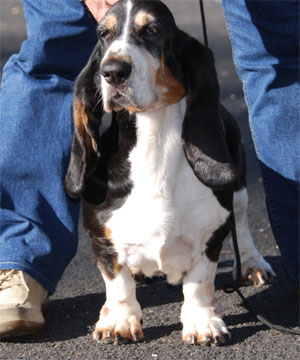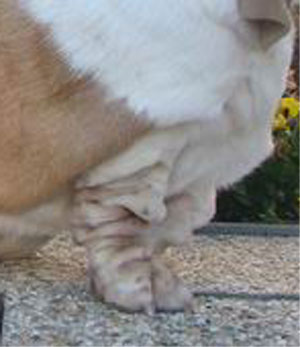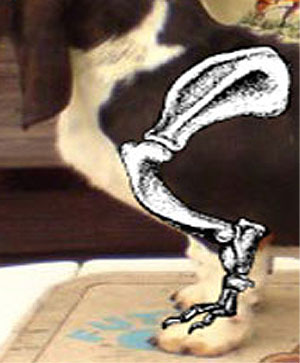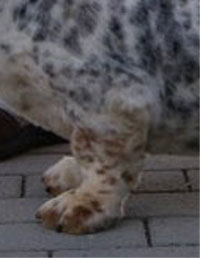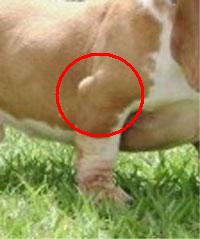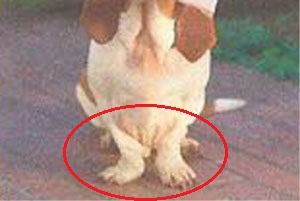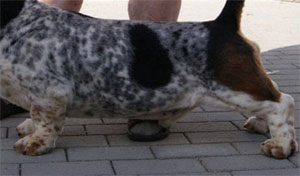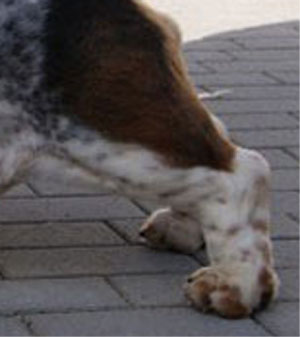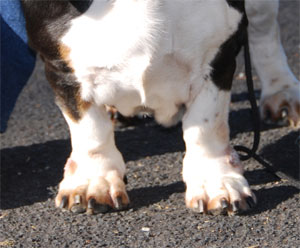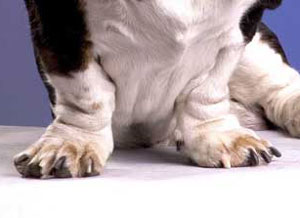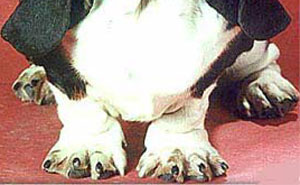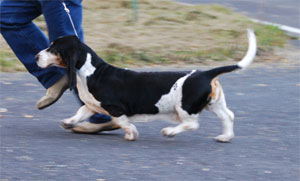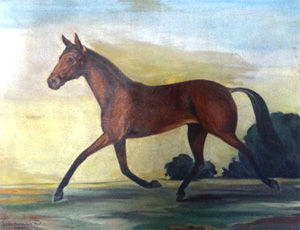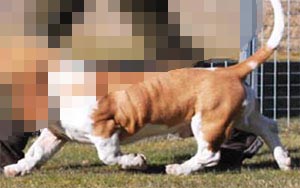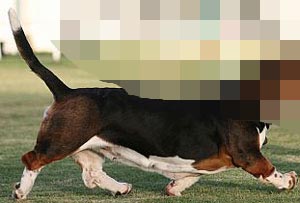Limbs
Forequarters:
Short, powerful front legs with strong bone. On pasterns are skin folds.
| Standard | My explanation of the standard |
|---|---|
|
Good front
|
Poorly front 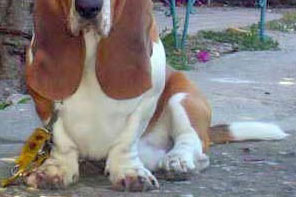
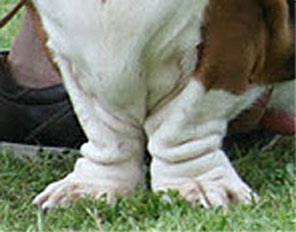
Knuckling-over front 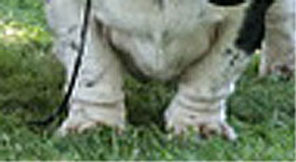
Wide Front 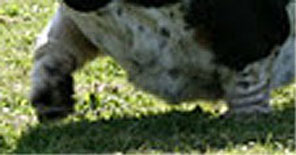
|
|
Excessive wrinkling of the front limbs. At lymphatic dogs loose skin with the underlying fat tissue seems very bulky. Apparently, it is believed that the leg is marked by a very strong bone. But this is just a big mistake. Slim down the dog and you will see very quickly that the bones of these dogs are not pronounced than that of a muscular Basset Hounds, who has enough loose skin. |
Shoulder
Shoulder blades well laid back; shoulders not heavy.
| Standard | My explanation of the standard |
|---|---|
|
Correct Schulter
|
Shoulder too far in front 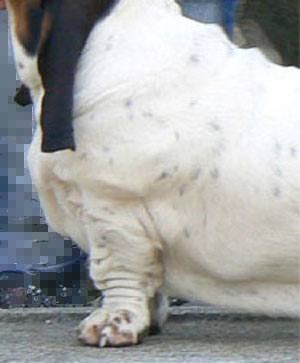
Steep shoulder 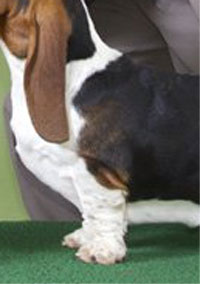
Overloaded shoulder 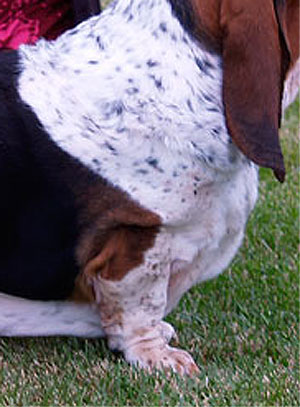
|
Elbows
Elbows turning neither in nor out but fitting neatly against side.
| Standard | My explanation of the standard |
|---|---|
|
Correct elbow
|
Turned out elbow
|
Pastern
Knuckling-over highly undesirable!
|
|
Hindquarters
Full of muscle and standing out well, giving an almost spherical effect when viewed from rear. Stifles well bent. Hocks well let down and slightly bent under but turn neither in nor out and just under body when standing naturally. Some wrinkles of skin may appear between hock and foot, and at the rear of joint a slight pouch of skin may be present, but on no account should any of these be excessive.
| Standard | My explanation of the standard |
|---|---|
|
Correct angulation
|
Poorly angulation 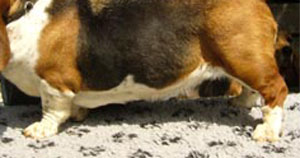
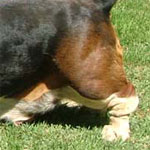
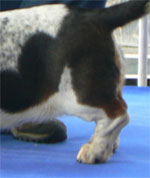
|
Hock
Low set, the hock is slightly subordinate, but turning neither in nor out when the dog is in a normal position.
|
|
Paws
Large, well knuckled up and padded.
Forefeet may point straight ahead or be turned slightly outwards but in every case hound always stands perfectly true, weight being born equally by toes with pads together so that feet would leave an imprint of a large hound and no unpadded areas in contact with ground.
| Standard | My explanation of the standard |
|---|---|
|
Correct Paw
|
Too soft paw
Splayed paw
The paw is the carrier of the total weight of the dog. It is therefore extremely important that this is properly formed. |
Gait/Movement
Most important to ensure that the hound is fit for purpose. Smooth powerful and effortless action with forelegs reaching well forward and hind legs showing powerful thrust, hound moving true both front and rear. Hocks and stifles never stiff in movement, nor must any toes be dragged.
| Standard | My explanation of the standard |
|---|---|
|
Correct Movement
If you understand the movement of a horse which is shown below, you understand the movement of a dog.
Excellent movement of horse and dog. Front and hind limbs in perfect coordination. |
Poore Movement
Knee and ankle joints in the movement may never seem stiff, also may not toe drag over the ground. |
